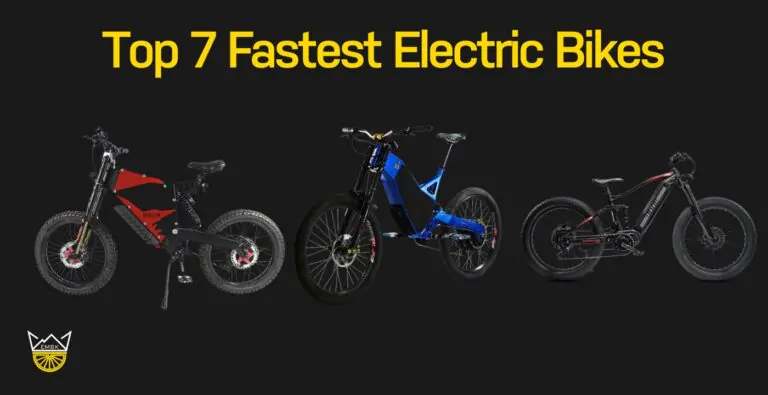
If you’re anything like us, you’ll want to know how an electric bike works, before forking over a wad of cash.
The truth is that, whilst electric bikes are simple to use, they’re a lot more complicated to develop. In principle, it’s just a normal bike with a battery and a motor strapped to it, but in reality, there’s a lot more going on, and we’re here to help you get to grips with it.
Full-throttle vs Pedal Assisted e-bikes
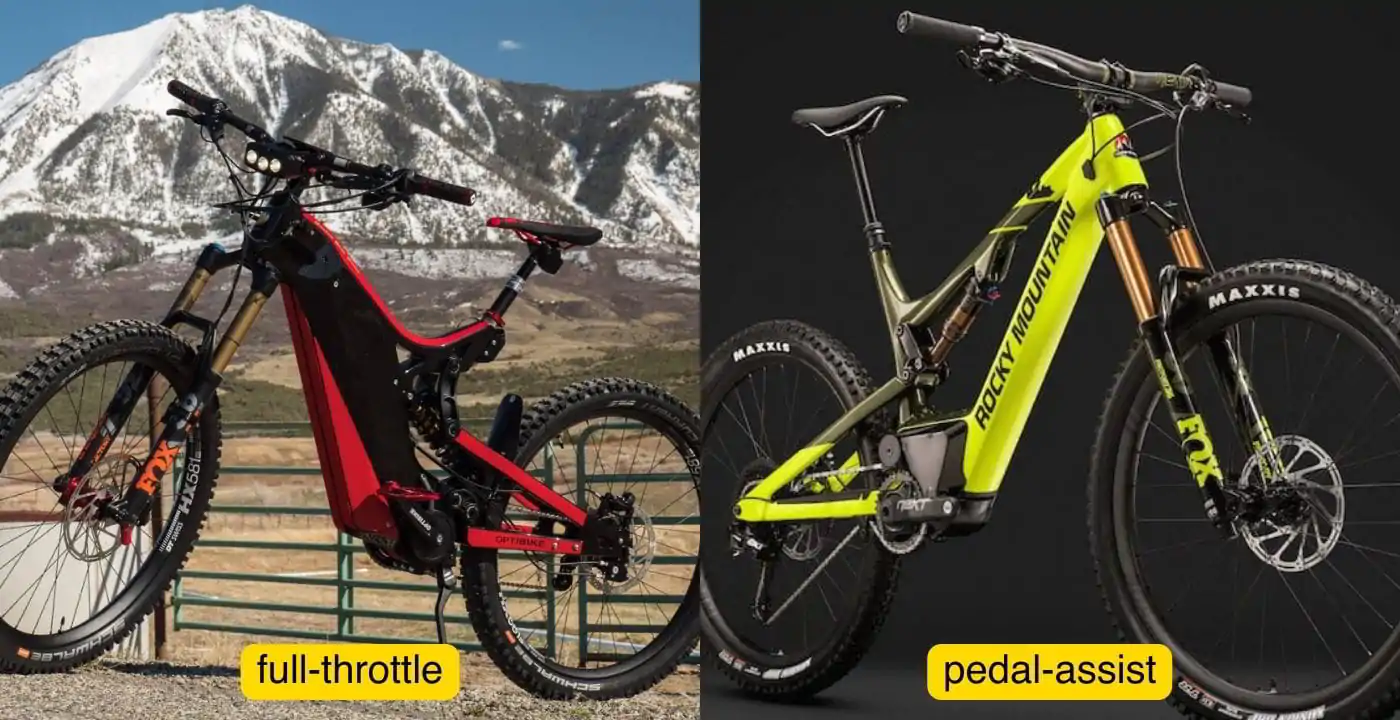
E-bikes come in a lot of shapes and sizes, and one of the main differences that it’s important to know is whether the bike is full-throttle or pedal-assisted.
Full-throttle e-bikes are capable of providing power to your bike without having to pedal at all, but they’re usually a bit less economical, and don’t often come with regenerative braking. These are less common than their pedal-assisted counterparts and are more limited in their max power output.
Pedal-assisted e-bikes, on the other hand, won’t be able to give you any power unless you’re putting in a little work yourself, and come with different assistance modes, so you can choose how much power is being given, which allows them to have a longer range.
Pedal-assisted e-bikes also have higher top speeds, because you can combine your cycling strength with the motor output to raise your speed over the programmed limit of the e-bike. So if you’re looking for fast electric mountain bikes, you’re looking at pedal assist
So, do you need to pedal an electric bike?
Well, you don’t strictly have to, but if you’re looking for electric mountain bikes specifically, they’re almost exclusively pedal-assisted only, and frankly, if you’re on a long trail, you’ll want the efficiency of a pedal-assisted motor.
Full-throttle e-bike
- Capable of powering wheels without pedal input
- Tend to be less economical
- Rarely have regenerative braking
- Less Common
Pedal-assisted e-bike
- Require rider to pedal for motor activation
- Capable of lasting much longer ranges
- Higher capacity for top speed
- More likely to utilise regenerative breaking
Electric bike throttle - How it works
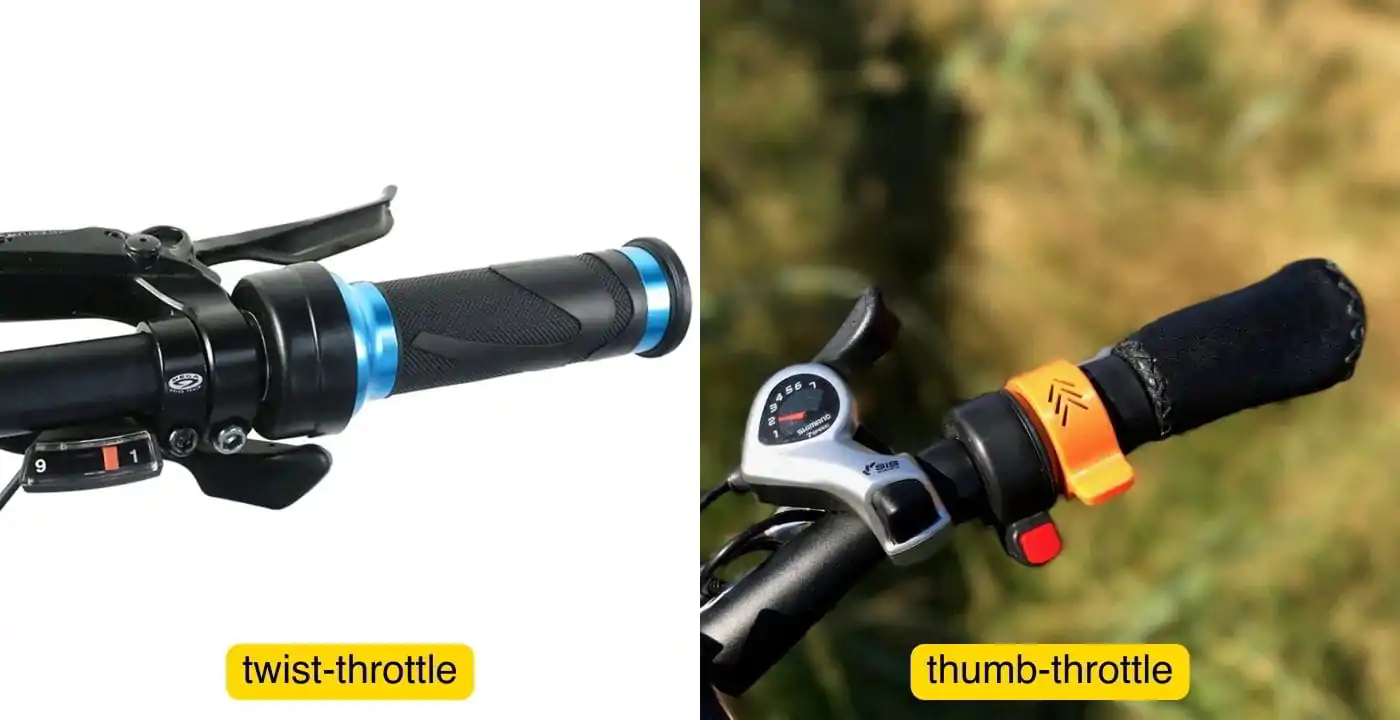
There are two types of throttle: twist throttle and thumb throttle. As you might’ve guessed from the name, you activate a twist throttle, by twisting the throttle. Did I just blow your mind? Yeah, it’s as simple as that, the more you twist, the more the motor is engaged.
Thumb throttles work pretty much the same, just instead of twisting your handle, you press on a spring-loaded paddle with your thumb. Who knew it could be this easy to blast down a dirt track!
Electric bike wheels
Most MTB and E-mtb have the same type of wheel, such as the Neo Mottera 1 or the Neo Mottera 5. However, some electronic bikes need specialised wheels, because using an electric motor imparts more torque, so weaker alloys are likely to bend or break. Although, this is only typically for bikes over 150kg, which is rare.
Some companies, like GeoOrbital even use radically different styles of wheels in which the motor structure replaces the spokes to ensure a more robust and efficient experience. You can find out more about how GeoOrbital is reinventing the wheel here.
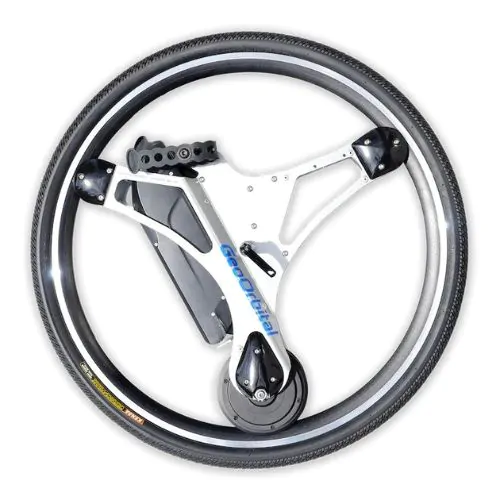
Electric bike batteries explained
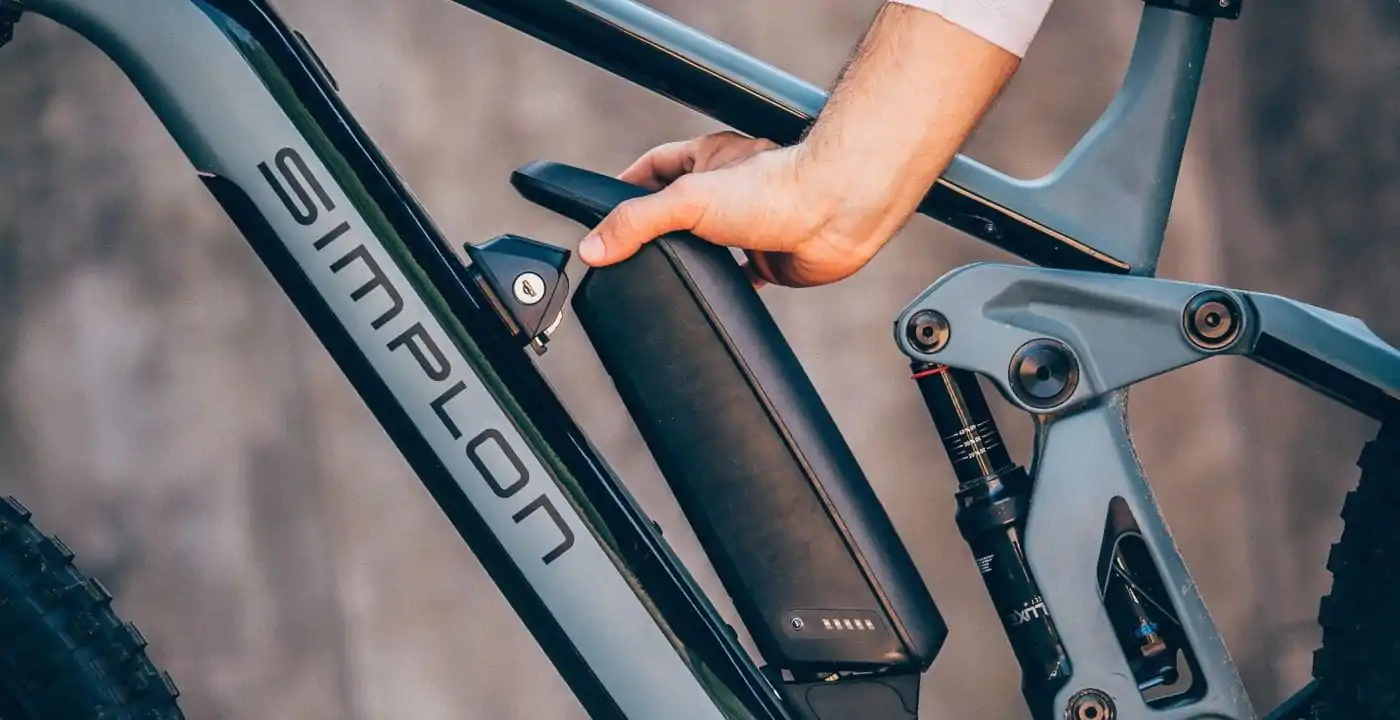
Most e-bikes currently use lithium-ion batteries to power their motors. Lithium-ion batteries are used in almost anything rechargeable, and they work via the interplay between an anode, a cathode, a separator and an electrolyte.
We’re sure all of you understand the concept of rechargeable batteries and don’t need to get into this kind of detail to understand e-bikes as a whole, but we’ve chosen to elaborate on lithium-ion batteries for the tech nerds like us who want to know every little detail. So feel free to skip over this if you only want to understand e-bikes themselves.
How lithium-ion batteries work
The anode is where current flows into a device, and the cathode is where current flows out. The separator exists between these two nodes to stop electrons from crossing over, whilst still allowing lithium ions to pass, which allows us to manipulate the electric potential within the battery, which in turn creates the current that we use to power the motor.
In principle, the electrolyte carries positively charged lithium ions through the separator, which creates the free electrons that we use to carry a charge through the circuit. Ions can be moved in either direction of the separator, allowing the battery to discharge to power the motor, or receive charge from another source.
If you want a little more clarity on this, the Office of Energy Efficiency and Renewable Energy has produced a great animation that demonstrates how lithium-ion batteries work.
How to use an electric bike?
To use a pedal-assisted bike, all you have to do is:
- Turn on the bike
- Hop onto it
- Choose your assistance level
- Start pedalling
- Crush that trail
A full-throttle e-bike only differs slightly in that you have to either twist the throttle or push on a button, depending on which type of throttle bike you go for. Really, it’s that easy on the user side. But you came here looking for a bit more than a short guide on how to ride an e-bike, didn’t you?
How do electric mountain bikes work?

All electric bikes run off the principle of using a battery to power a motor which imparts torque to a bike’s wheel. These motors can be rear mounted, front mounted or mid-drive mounted, each with its own benefits.
Almost all electric mountain bikes work through a mid-drive mount, so that’s what we’ll focus on here, though there are some oddities like the GeoOrbital wheels which have individual battery + motor combinations.
Pros of Mid-drive motors
Mid-driven motors are attached directly to the sprocket of the crankset, which is the same place that the pedals on a regular pushbike would impart force, so mechanically, there isn’t much difference between the way that electric mountain bikes work and a regular pushbike, which results in mid-driven e-bikes feeling much more natural to ride than their hub-driven counterparts.
Since these motors work through pedal assistance, they use torque sensors to monitor how hard you’re pedalling and then match it based on which assistance setting you’ve chosen.
The cheaper cadence sensors you find on full-throttle e-bikes just won’t cut it, because they only measure RPM. As a result of using torque sensors, these mid-drive motors can far more accurately apply the right level of force, whilst still providing you the feedback to get in tune with your bike on a technical climb.
It’s not just efficiency and feeling that you’ll get from a mid-drive motor, but also balance; because the weight is placed centrally, you’ll be much more stable, which is the gold standard for traversing sketchier trails. It’s no surprise that mid-drive mounted motors are the standard for electric mountain bikes; no one wants to take a tumble because of an excessively heavy wheel.
Another benefit of mid-driven motors is that, since they enter the kinetic chain earlier than hub-mounted motors, they get to utilise more standard bike parts like shifters and derailleurs, meaning that bike mechanics are more likely to be able to service the bike without needing e-bike specific knowledge, and if you’re someone who rides hard and often, this can be a lifesaver.
Cons of mid-drive e-bikes
Before you accuse us of filling our pockets with money from mid-drive bike promotions, let me mention these styles of e-bikes do have some flaws.
Whilst hub-mounted motors can be flexible with which bikes and wheels they can be used on, mid-drive motors require specially designed frames, which means that more money is going to be spent on hiring designers, which does no favours to the price tag. But this also means that you won’t be dealing with any frankenstein bikes with parts that only just about fit together, so if you’re serious about mountain biking, it’s really a win.
Another problem that is especially pronounced with mid-drive motors, as opposed to hub-mounted motors is that the drivetrain and other components will be worn more quickly due to the increased forces exerted on them. These motors pretty much treat your bike like it’s being ridden intensively, even if you’re on an assistance level where your legs aren’t actually doing that much work.
Frequently Asked Questions
In terms of riding distance, you should expect somewhere between 30-50 miles for pedal-assisted riding (some bikes like the Neo Mottera 4 can last up to 75 miles!) , and around 20 miles for no pedal throttle assistance. As for long-term battery longevity, an e-bike battery should still retain around 80% of its capacity after 500 charges, which gives it a pretty decent life-span, if you treat it right.
Should I charge my e-bike after every ride?
This really depends on how much charge you use up each time. In general, the sweet spot for charging is around 25-40% up to 85% – this range will help to prolong its lifespan. As with any kind of rechargeable battery, try to avoid leaving it to charge more than necessary, because overcharging affects the capacitance, causing your battery to lose performance earlier than it should.
How heavy is an electric bike?
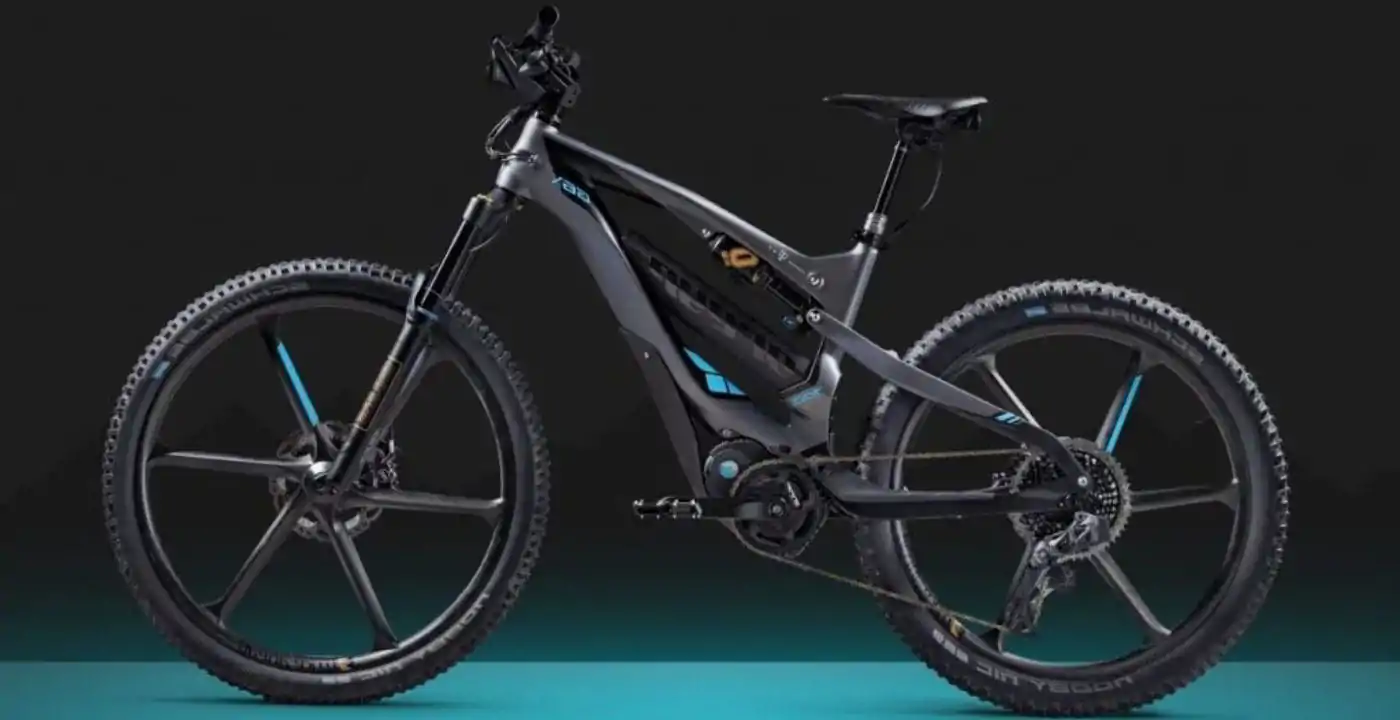
We can’t sugarcoat it, electric bikes are significantly heavier than pushbikes and tend to carry around 10kg of extra weight, putting most e-bikes in the territory of 10-25kg and electric mountain bikes a little heavier at 25-35kg. Of course, there are lighter models, but these often come at the cost of range, because a lot of the weight is carried in the battery.
What happens when an e-bike runs out of battery?
It becomes a lot harder to ride, of course, it’s still possible, but remember these bikes are necessarily heavier, which makes them a lot harder to cycle. Though these bikes can actually be charged through regenerative braking and sometimes through cycling, they’re not significant sources and aren’t likely to alleviate the problem too much.
Do you need gears on an electric bike?
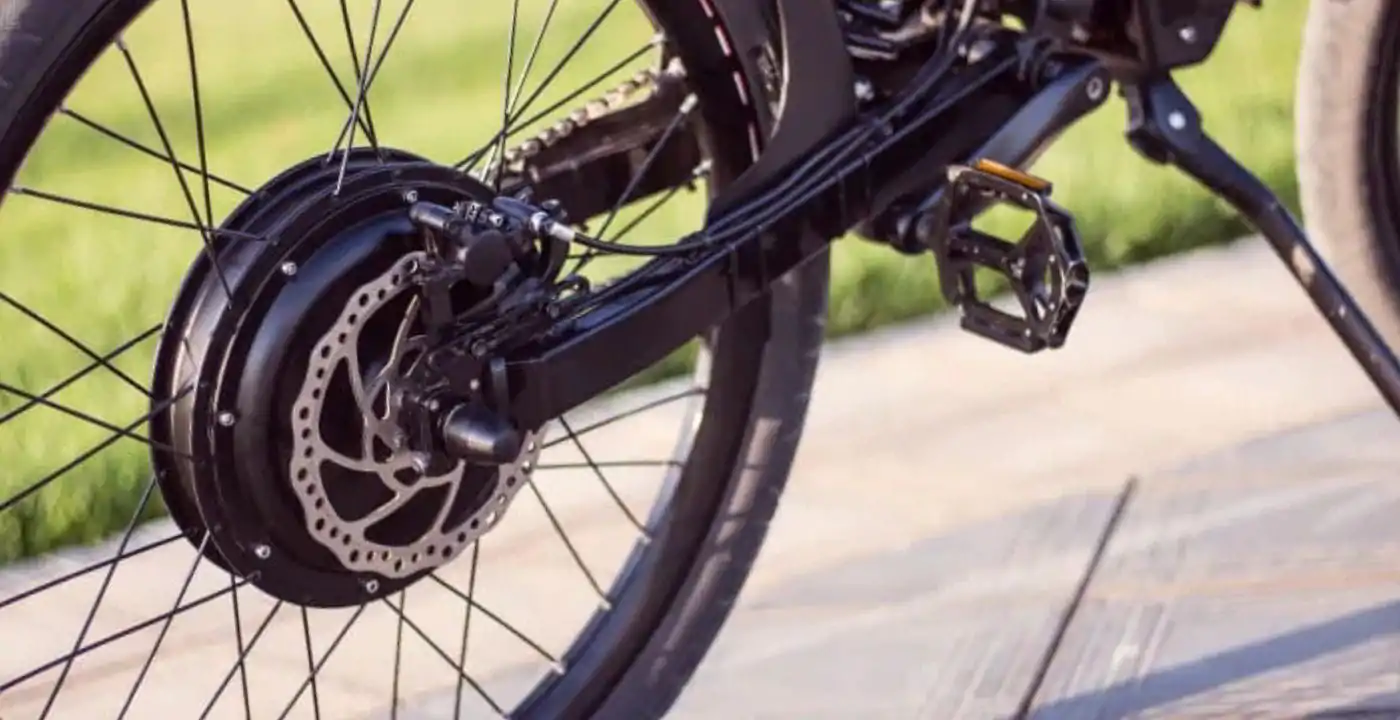
There are electric bikes that have no gears, and though the simplicity of their designs can be useful, you’re most likely shooting yourself in the foot. Without gear switching, bikes are much less efficient, and you’ll find that the battery on a single-speed bike will drain much quicker than its geared counterparts when climbing hills.
Conclusion
We’ve covered a lot of ground, from the different types of bikes and throttles to the effects of a different mounting position for the motor, and even a brief spell where we talked about the chemistry of rechargeable batteries. We hope we haven’t scared you off with any memories of secondary school chemistry.
After learning the arcane secrets of electric mountain biking, you might be a little more inclined to pick up one yourself, but if you need a little more encouragement, we recommend checking out our blog on whether E-mtb’s are bikes worth it? After all, it’s not always about the technical details, but what they bring to you.



